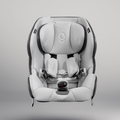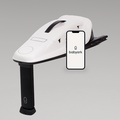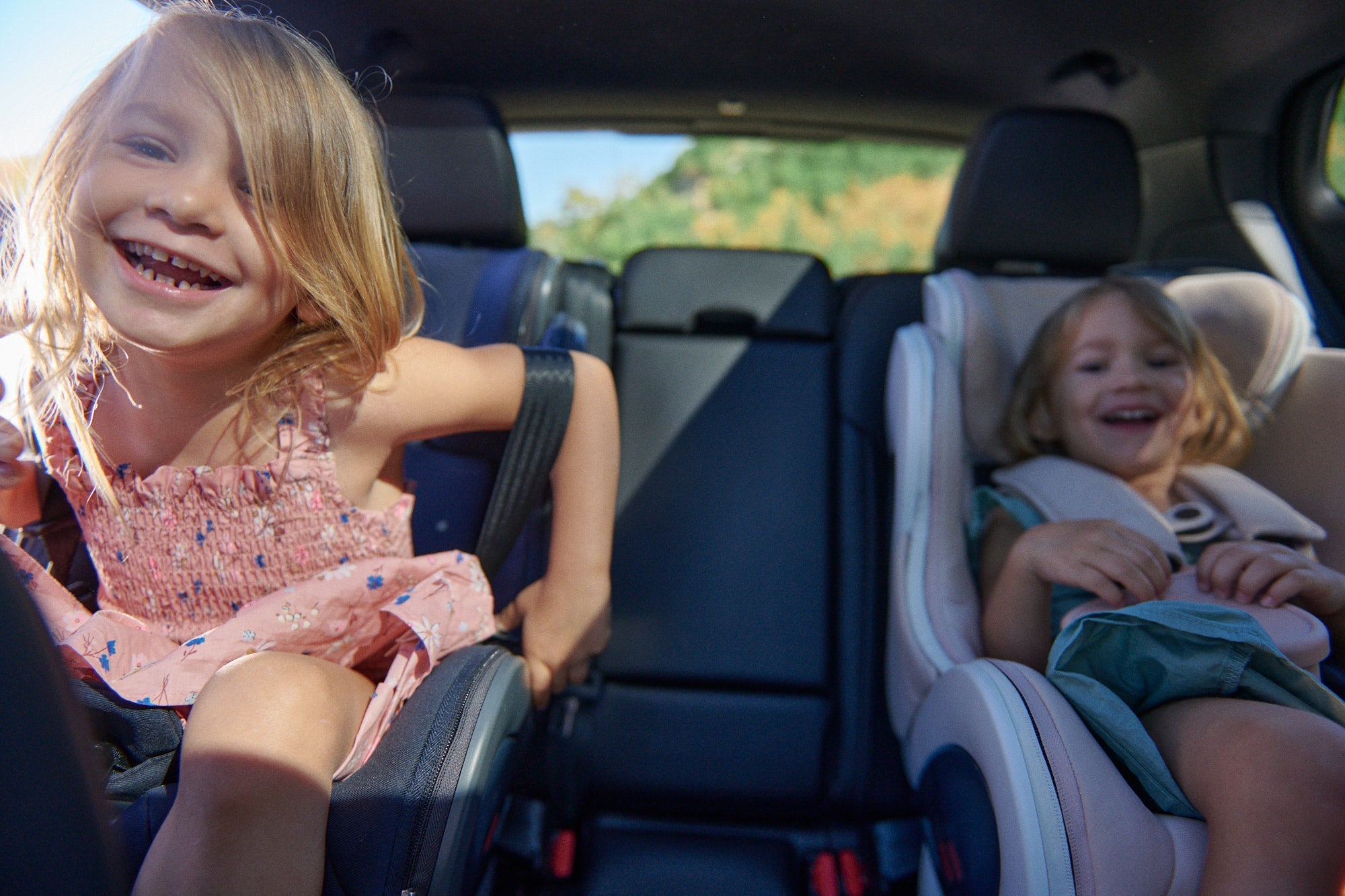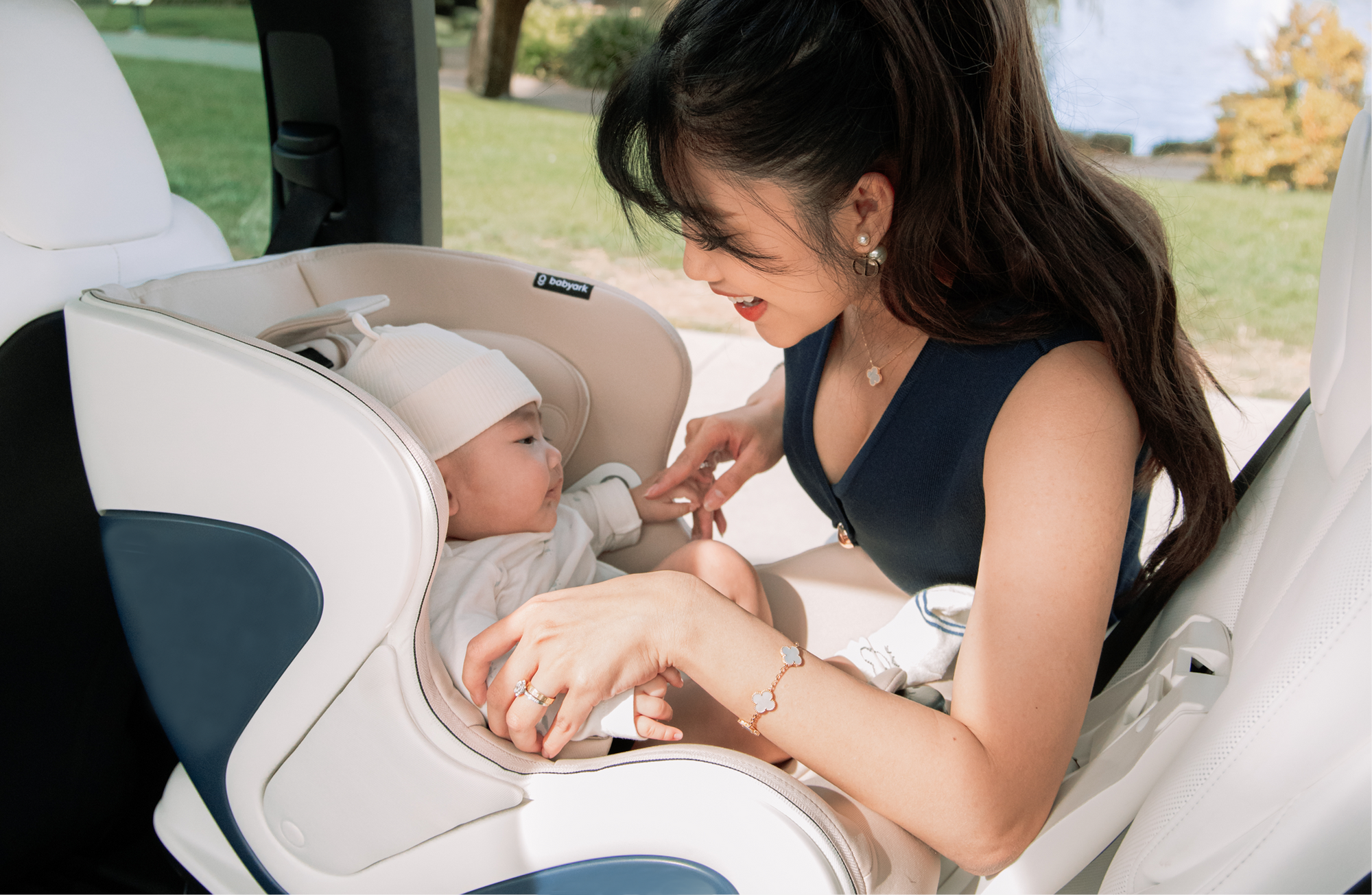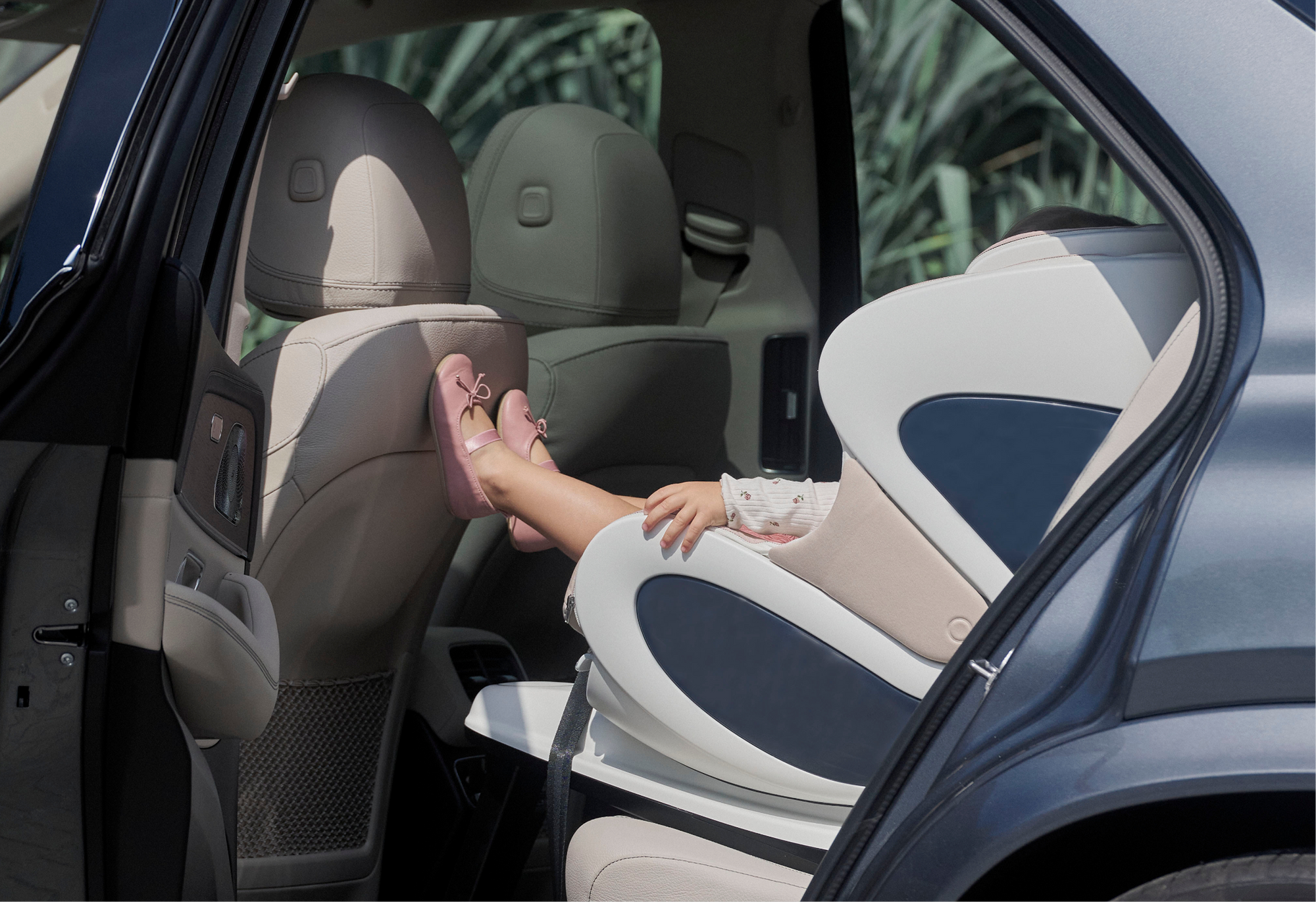As parents, we all want to make sure our children are as safe as possible, especially when it comes to car travel. A common question parents face is: When is the right time to switch from rear-facing to forward-facing? The answer is more critical than many realize, as research shows that keeping your child rear-facing for longer can dramatically reduce the risk of injury in a crash.
According to the American Academy of Pediatrics (AAP), children should remain in rear-facing car seats for as long as possible, ideally until they reach the maximum height or weight limits of their seat. Let’s explore the key factors in determining when to switch and why babyark’s convertible car seats make this transition safer and easier.
Why Rear-Facing is Safer
Keeping your child in a rear-facing position offers significant protection during a car crash. In a rear-facing seat, this size child’s head, neck, and spine are better supported, distributing the crash forces over the entire body. This is especially important for young children whose bones and muscles are still developing.
Studies by the National Highway Traffic Safety Administration (NHTSA) show that children under the age of 2 are 75% less likely to be seriously injured or killed in a rear-facing seat during a car crash compared to forward-facing. This is because the back of the seat absorbs the force of the impact and cradles the child’s head, reducing the risk of serious neck and spine injuries.
When to Switch to Forward-Facing
The AAP recommends keeping your child rear-facing for as long as possible, but when exactly should you switch to a forward-facing seat? Here are the key factors to consider:
- Age: Most experts recommend children stay rear-facing until at least 2 years of age, though many convertible car seats, including babyark, are designed to comfortably accommodate rear-facing positions for well beyond that.
- Weight and height: You should switch to forward-facing only when your child exceeds the weight or height limits for rear-facing in your car seat. Check the manual for your specific seat model—babyark’s Premium Convertible Car Seat can be used rear-facing for children weighing up to 55 pounds and the Classic Convertible Car Seat and Smart Convertible Car Seat can be used rear-facing for children weighing up to 50 pounds, or 49 inches.
- Development: While weight and height are the primary factors, consider your child's overall physical development. For example, if your child’s head is within one inch of the top of the seat when rear-facing, it may be time to switch to forward-facing. The babyark convertible car seats have 11 headrest positions to help with extended rear facing, but we suggest parents keep an eye on their child's position within the seat to know when it's time to adjust.
How to Safely Transition to Forward-Facing
When your child is ready to transition to forward-facing, it’s important to install the seat correctly to ensure maximum safety. Here are the steps to follow:
- Adjust the harness: In a forward-facing position, the harness straps should be positioned at or above your child’s shoulders. Make sure the harness is snug enough that you can’t pinch any slack in the straps.
- Ensure you're using the proper belt path: Your vehicle's seat belt, if being used, should be threaded through the proper path in your car seat and this path may be different than the path that was used when the seat was rear facing.
- Recline as needed: Many convertible car seats, including babyark, allow you to adjust the recline when the seat is forward-facing to ensure your child is both comfortable and safe. Safety-first as always, the babyark has a sticker that shows the angles at which the car seat is still within the designated safety range.
Check your car seat manual and your vehicle’s owner’s manual to confirm that all components are correctly installed and that your child is properly secured.
How babyark Simplifies the Transition
babyark’s convertible car seats are designed to make the rear-facing to forward-facing transition as seamless as possible. Here’s how:
- One installation regardless of direction: babyark is designed with a base and a separate seat, meaning you install the base once and then you can easily flip the seat to be rear or forward facing. Once you've ensure proper installation of the base you won't need to think about it again, regardless of the direction of the seat.
- Smart app guidance: babyark’s mobile app provides step-by-step instructions for both rear- and forward-facing installation of Smart and Premium seats, ensuring you never miss a critical step.
- Real-time alerts: The base's built-in sensors offer real-time feedback via the app, notifying you if the installation is incorrect or if adjustments need to be made as your child grows.
With 14 sensors monitoring everything from installation to proper harness use, babyark’s smart car seat helps parents feel confident that their child is safe at every stage of development. Learn more about babyark’s innovative features.
Common Mistakes to Avoid When Switching to Forward-Facing
Transitioning to a forward-facing seat can introduce new challenges. Here are some common mistakes parents make and how to avoid them:
- Switching too early: Many parents switch their child to a forward-facing seat too soon. As long as the child is within the height and weight range, rear-facing is always safer, so follow the guidelines provided by your car seat manufacturer to determine when it’s time to make the switch.
- Incorrect harness placement: When forward-facing, the harness straps must be placed at or above your child’s shoulders. Incorrect placement can reduce the seat’s effectiveness in a crash. Never assume the former placement is accurate when changing the car seat's direction - readjust the level of the harness to make sure your baby is safely buckled at all times.
- Incorrect belt path being used: Ensure you're now threading the vehicle seat belt through the forward facing path. With babyark, this step is unnecessary as the installation of the base happens one time and then you can easily flip the seat in either direction without the need to reinstall the base.
For more tips on avoiding common mistakes, visit NHTSA’s car seat safety guide.
Safety First - No Matter the Direction
Making the switch from rear-facing to forward-facing is a big step in your child’s car seat journey. By following expert guidelines and using the right car seat, you can ensure that your child stays safe at every stage of development. With babyark’s smart technology and safety-first design, you can make this transition confidently, knowing that you’re providing the best possible protection for your child.
For more information on how babyark can support your child’s safety through every stage, visit babyark.com.
For more detailed car seat installation instructions, check your car seat manual. You can also visit Safe Kids Worldwide’s car seat guide, or for state-specific guidelines, check out NHTSA’s car seat safety recommendations.

